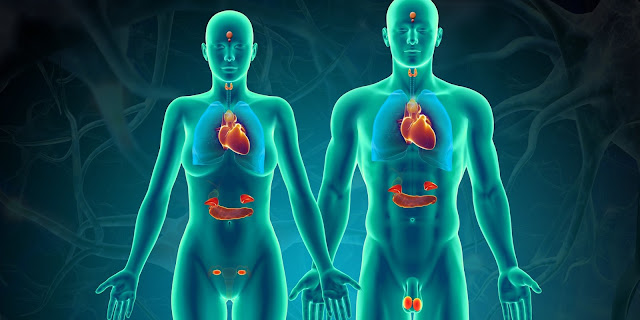Diagnostic Radioisotopes: Essential tools for modern healthcare
Diagnostic radioisotopes play an invaluable role in modern medicine by enabling non-invasive diagnostic imaging procedures that provide vital information about a patient's health. These radioactive tracers have revolutionized how doctors can detect and diagnose diseases. Let's explore the world of diagnostic radioisotopes and their applications in healthcare.
What are diagnostic radioisotopes?
Diagnostic radioisotopes are stable or short-lived radioactive forms of atoms
or molecules known as radiotracers that emit radiation as they decay. When
administered to patients in small, carefully controlled doses, these
radiotracers can be detected by specialized medical imaging equipment like
gamma cameras and positron emission tomography (PET) scanners. As the
radiotracer circulates through the body, it gives physicians the ability to
visualize organ structure and function, diagnose disease states, and monitor
responses to treatments. Some commonly used diagnostic radioisotopes include
technetium-99m, fluorine-18, carbon-11 and gallium-67.
Medical imaging modalities
There are several important medical imaging modalities that utilize diagnostic Radioisotopes
to acquire functional and molecular images of the body:
- Nuclear medicine imaging techniques like SPECT (single photon emission
computed tomography) and PET imaging are often used alongside radioisotopes to
produce 3D images of organ structure and function. SPECT uses gamma-emitting
isotopes like technetium-99m while PET employs positron-emitting isotopes like
fluorine-18.
- Scintigraphy employs gamma camera technology to acquire planar images showing
the biodistribution of radiotracers in organs. Examples include bone
scintigraphy and thyroid scintigraphy.
- Positron emitters like fluorine-18 allow high-resolution tomographic PET
imaging capable of quantifying biochemical and molecular processes in vivo.
- Other techniques likeradiography leverage radioisotopes' ability to expose
diagnostic x-ray films for applications like salivary gland imaging.
Applications in disease diagnosis
The targeted delivery of radiotracers paired with sensitive medical imaging
equipment has enabled radioisotopes to play a pivotal role in diagnosing and
managing many diseases:
- Oncology: PET scanning using fluorodeoxyglucose (FDG) has revolutionized
cancer staging, detection of recurrent tumors, and evaluation of treatment
responses. Other radiotracers like gallium-67 and radioactive iodine can detect
cancers.
- Cardiology: Myocardial perfusion imaging with technetium-99m assists in
diagnosing coronary artery disease by assessing blood flow to the heart muscle.
- Neurology: PET imaging of radiolabeled biomarkers shows promise for early
Alzheimer's and Parkinson's disease diagnosis.
- Endocrinology: Radioactive iodine uptake tests diagnose thyroid disorders and
monitor doses for hyperthyroidism treatment.
- Infectious disease: Gallium-67 scanning localizes infection/inflammation
sites. Technetium-99m labeled white blood cells help diagnose inflammatory
conditions.
- Bone scanning: Tc-99m methylene diphosphonate identifies bone metastases,
fractures, bone infections and arthritis.
Delivery of unprecedented physiological insight
The main advantage of diagnostic radioisotopes lies in their ability to
non-invasively provide in vivo functional and molecular information about
normal and disease states that cannot be obtained through conventional medical
imaging alone. This has opened doors to better understanding disease
mechanisms, improving diagnostics and ultimately reshaping management
approaches. The delivery of radiotracers tailored to biomarkers also enables
quantitative measurement of biological processes like receptor density, enzyme
activity and gene expression – a level of physiological insight impossible to attain
otherwise. These visualization capabilities are enabling shifting medical
paradigms from reactive disease treatment to proactive pre-emptive and
personalized care approaches based on early diagnosis and risk stratification.
Future opportunities and challenges
While diagnostic radioisotopes constitute an essential component of modern
healthcare infrastructure worldwide, their availability and access remain
unequal globally. Opportunities exist to optimize production and distribution
systems to enhance accessibility. Novel radiotracers targeting new disease
biomarkers also hold promise but require heavy investments in research,
development and regulatory approvals. The industry must also address challenges
around radioactive waste disposal while ensuring occupational exposure limits
are stringently followed. With continued innovation and diligent management of
associated risks, diagnostic radioisotopes are poised to take medical imaging,
diagnostics and treatment monitoring to even greater heights in the decade
ahead.
In summary, diagnostic radioisotopes have profoundly changed medical practice
by enabling non-invasive visualization of physiology at the molecular level.
Their utility across diverse clinical domains demonstrates their indispensable
role in healthcare today. Future innovations promise to further expand their
applications toward precision diagnosis and personalized care. With prudent
management, radioisotopes will likely remain invaluable tools empowering
physicians worldwide to better understand, diagnose and treat disease for many
years to come.
Get more insights on Diagnostic
Radioisotopes




Comments
Post a Comment